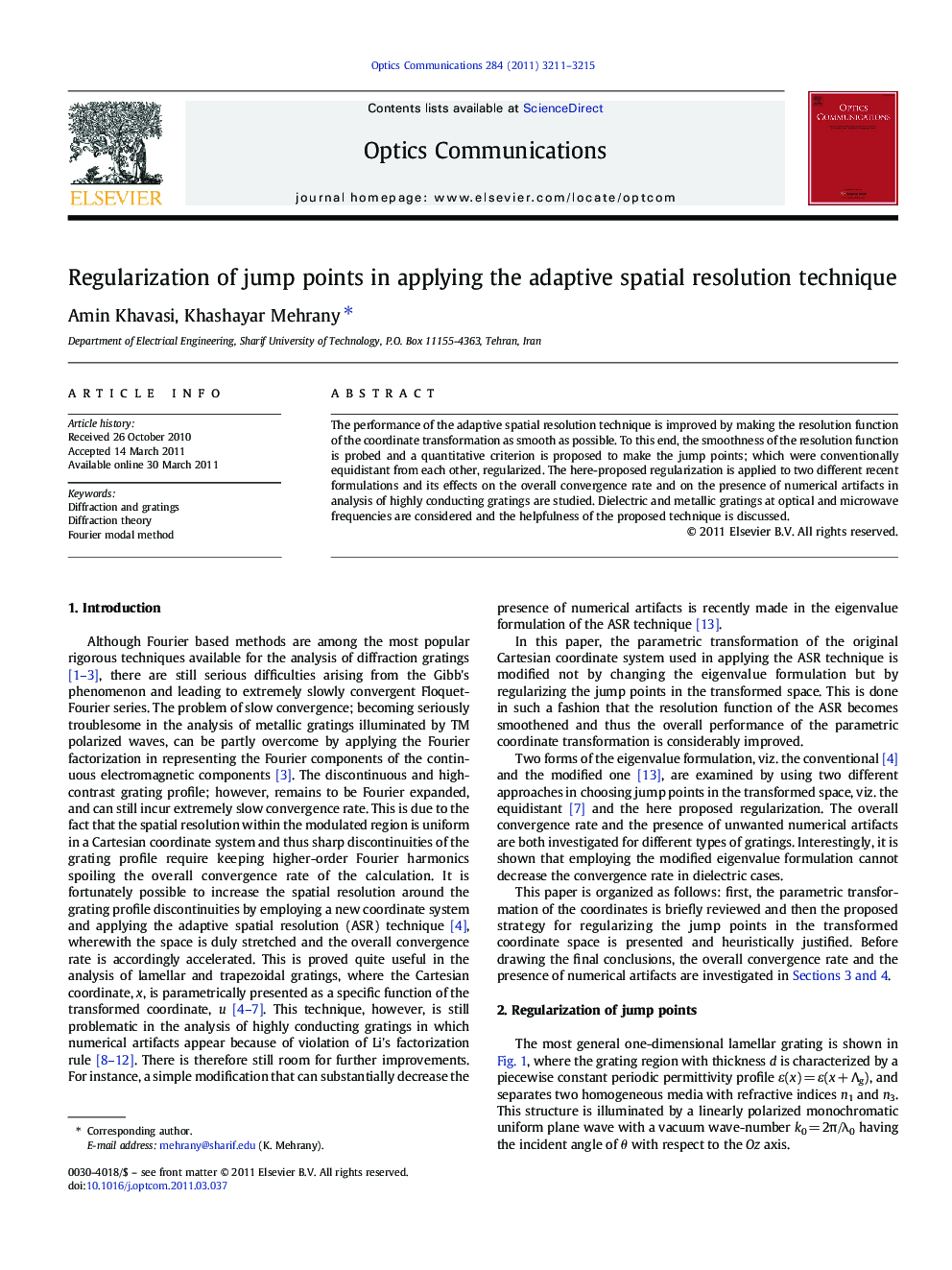| Article ID | Journal | Published Year | Pages | File Type |
|---|---|---|---|---|
| 1537265 | Optics Communications | 2011 | 5 Pages |
The performance of the adaptive spatial resolution technique is improved by making the resolution function of the coordinate transformation as smooth as possible. To this end, the smoothness of the resolution function is probed and a quantitative criterion is proposed to make the jump points; which were conventionally equidistant from each other, regularized. The here-proposed regularization is applied to two different recent formulations and its effects on the overall convergence rate and on the presence of numerical artifacts in analysis of highly conducting gratings are studied. Dielectric and metallic gratings at optical and microwave frequencies are considered and the helpfulness of the proposed technique is discussed.
Research Highlights► There are different implementations for adaptive spatial resolution (ASR). ► Their performances are studied and compared against each other in different cases. ► The presence of numerical artifacts and the issue of convergence are considered. ► A modification is proposed to improve the overall performance of the ASR technique. ► Thanks to the proposed modification, the best strategy to implement the ASR is found.
